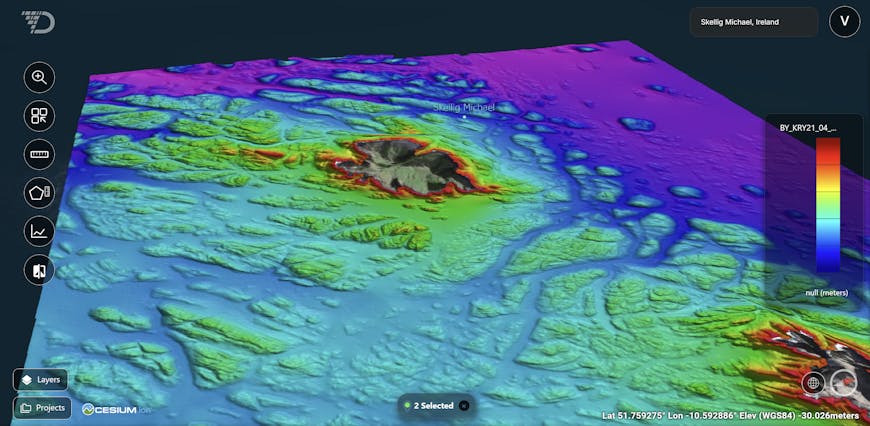Terradepth Processes Seafloor Data at the Edge with Cesium ion Self-Hosted
About 25% of the global seafloor has been mapped in high resolution, according to NOAA, leaving a lot of work to be done. It’s not always practical or safe for humans to be involved, and that’s where Terradepth comes in: its autonomous underwater vehicles collect vast amounts of 3D seabed data hosted on Cesium ion Self-Hosted and streamed to its CesiumJS-powered app, Absolute Ocean.
Terradepth cuts the seafloor-to-browser process from weeks to days. Courtesy Terradepth.
Traditionally, sending out a crew, collecting data, manually processing it, and making it available to users took several weeks. Using machines for dangerous, repeatable work, processing and sharing data where it’s captured, and employing people for analysis cuts the seafloor-to-browser process to days.
Terradepth has been using Cesium since Absolute Ocean’s development and release in 2022. Absolute Ocean users collect and manage their data securely so they can recognize geographic physical features, identify human-made objects like sunken wrecks or unexploded ordnance, and observe change over time beneath the waves in immersive 3D. Hydrographers in academia, infrastructure, and national security rely on this growing collection of undersea geospatial data for better, faster decisions, with nearly immediate access to interactive data instead of a static slide or hard drive transfers.

Skellig Michael, Ireland, in Absolute Ocean. Courtesy Terradepth.
Detail in ocean data varies: 500 m resolution from satellite altimetry, 50-100 m resolution from a ship, and 5 cm resolution from a robot near the seafloor, where human safety is questionable or even impossible. Terradepth’s AUVs use multibeam sonar, magnetometers, and more to collect terabytes of data. More detail means more data, and Terradepth uses Cesium to get it to users efficiently and securely.
With Cesium ion Self-Hosted, Terradepth stores massive point clouds, GeoTIFFs, and other data types; tiles the point clouds into 3D Tiles; and streams them to Absolute Ocean, which is built on CesiumJS, for sharing with a broad research community or smaller set of decision-makers. Cesium ion Self-Hosted enables Absolute Ocean’s processing and sharing at the edge and supports data residency requirements. In addition to its detailed seabed data, Terradepth accesses Cesium World Terrain and Bing Maps Aerial imagery for accurate geospatial context above sea level.
“Terradepth collects terabytes of data from the ocean. The sheer size meant customers used to wait weeks or months for their data. But with Absolute Ocean using Cesium Tilers at the edge we can let them see it comparatively instantly—with an intuitive, immersive, and three-dimensional user interface,” said Andrew Lunstad, Terradepth CTO.
Watch Andrew Lunstad's 2025 Cesium Developer Conference talk to learn more about why Terradepth deploys Cesium ion Self-Hosted.
Comprehensive, collaborative seafloor data becomes insight into one of the least explored parts of our planet.
Learn more about hosting, tiling, and streaming massive datasets in your own environment to process at the edge and meet strict security requirements.